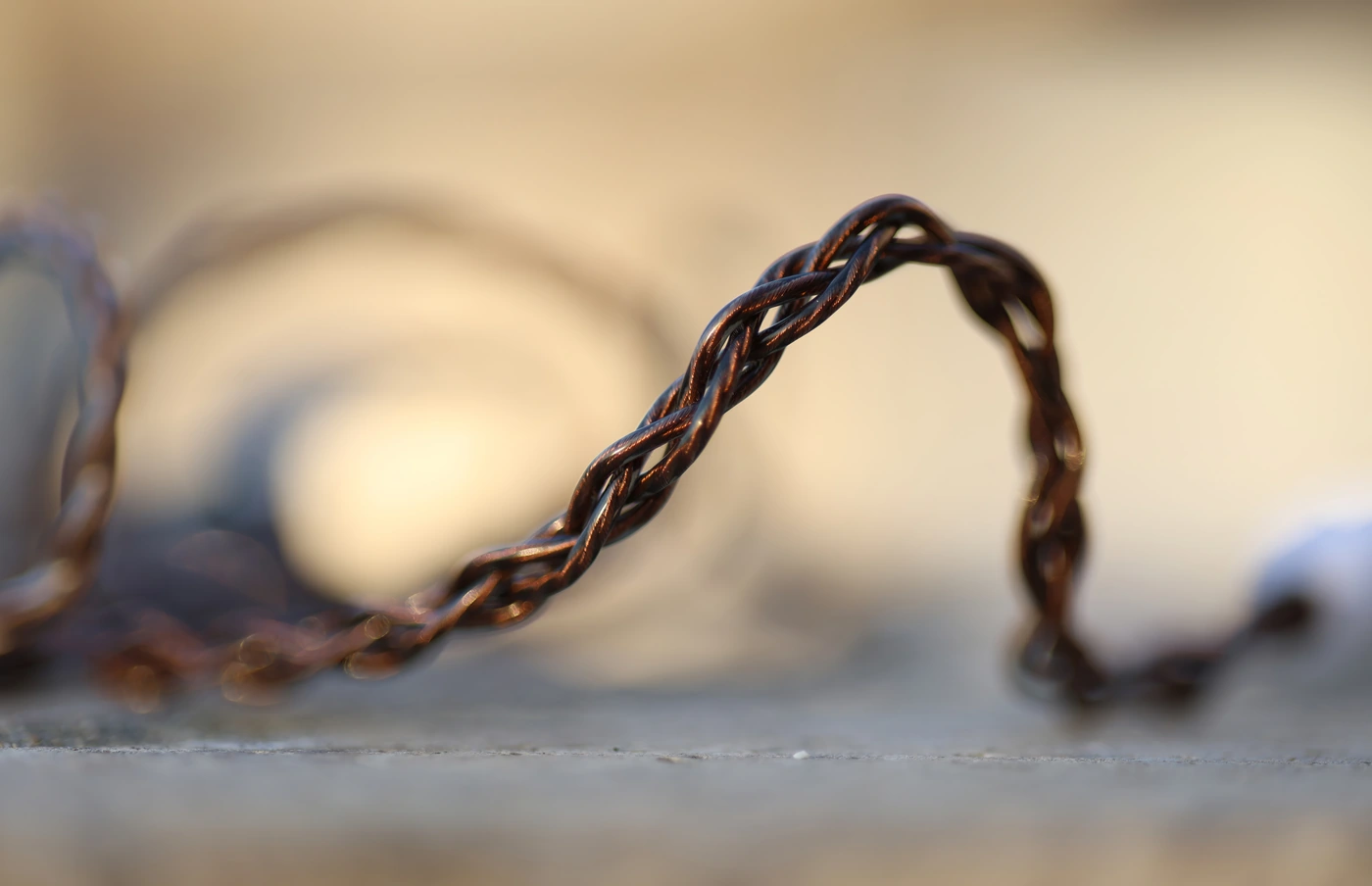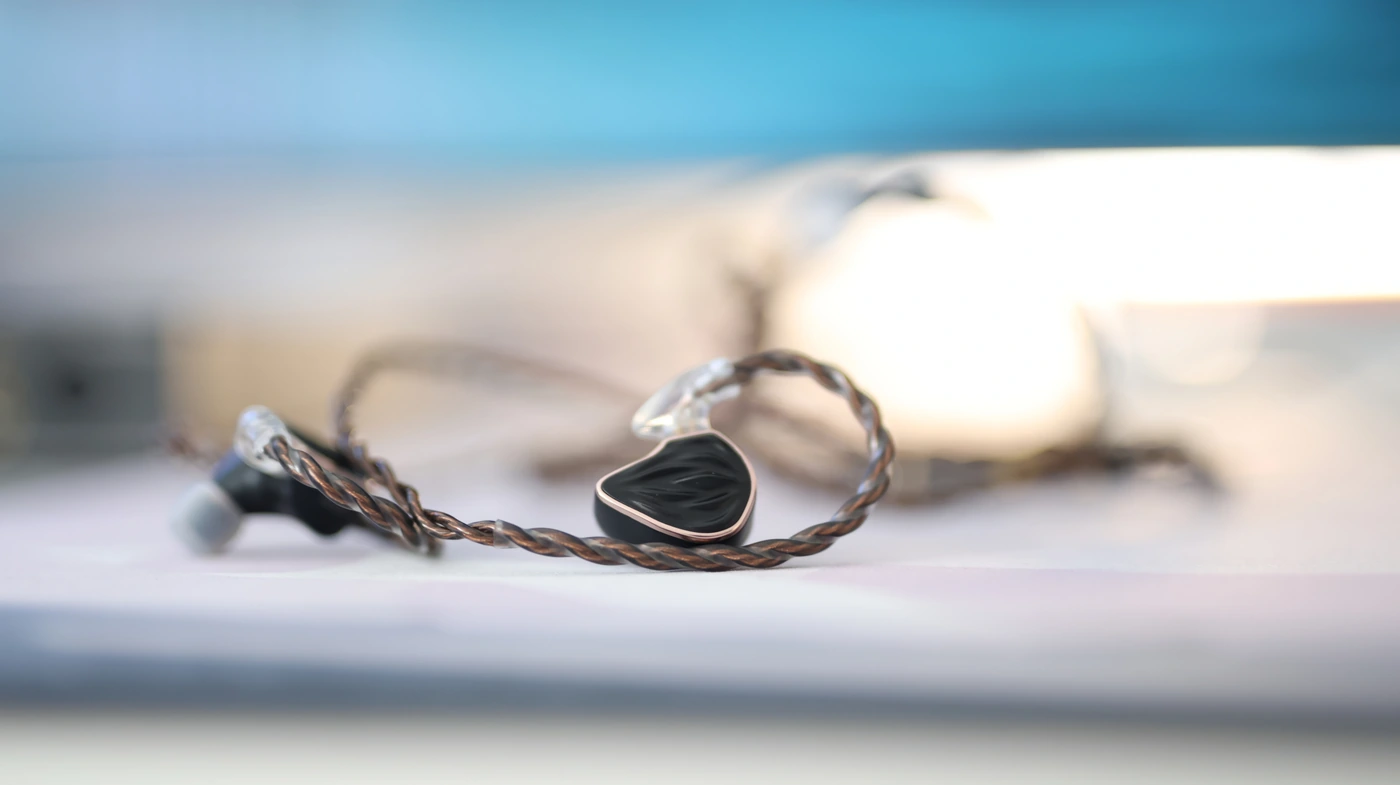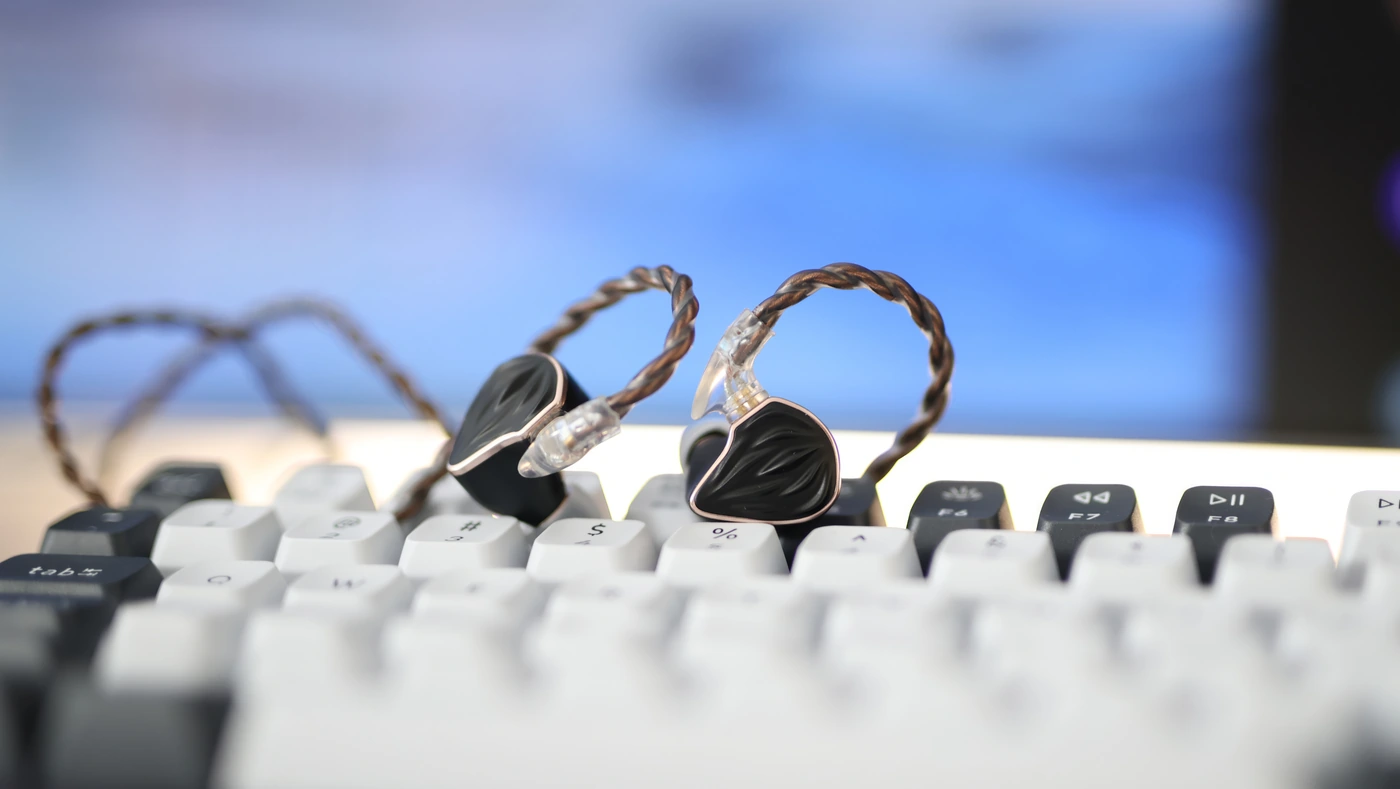HIDIZS MS3 Hybrid IEMs – The Traditional Chifi Experience
HIDIZS MS3 is a $109 USD pair of IEMs / In-Ear Monitors with a hybrid driver design, which today we will review and compare to other entry-level IEMs, including KZ Knowledge Zenith Joyodio VZ10 (79 USD), Tangzu Fudu Verse 1 (89 USD), ddHIFI Janus3 (129 USD) and 7Hz Legato (109 USD).

Introduction
HIDIZS is a popular brand and name from China, having sold thousands of products and having tens of models under their name banner. They usually specialize in creating entry-level products, including dongle DACs, IEMs, and other accessories. HIDIZS products can be purchased directly from their website, from Chifi shops like Linsoul or even Amazon, and all of those places have different sales happening, so when considering a HIDIZS product it is a good idea to check out each platform to find the best price available at that moment. . As an Amazon Influencer, I earn from qualifying purchases, and using the purchase links in my reviews helps me maintain this website and Youtube Channel. I thank HIDIZS for providing the sample for this review, in exchange for my honest opinion.
PROs – Super Price / Performance ratio, Ergonomic Build, Good Fit, Natural Midrange, Good resolution, Intimate soundstage that brings voices close to the listener without sounding narrow, Clean midrange with no grain, full bass when the mixing / mastering calls for it.
Cons – No transport case included, just a pouch, On the Heavy Side, Filters do not change the sound very much, Sensitive to source noise, Not very easy to drive, Same signature across most music, imposes the tuning a bit much.
Product Link
You can grab one from www.amazon.com here – https://amzn.to/43A4QJN
Build Quality/Aesthetics/Fit/Comfort
HIDIZS always made interesting IEMs, and MS3 is an entry-level model coming with one dynamic driver, and two Balanced Armatures, with a 10.2mm size for the dynamic driver, and the SWFK-31736 Balanced Armatures from Knowles. You can order the MS3 with either 3.5mm Single Ended cable or a 4.4mm balanced cable. The two cables are the same in construction, with just the plug being different.

The shell of the MS3 is made of aviation Aluminum Alloy, and they have a Shark Fun detachable cable with a standard 0.78mm 2Pin connector. There are three tuning filters included in the package, and a soft transport bag is included too. For your comfort, there are three types of tips, three sizes of each, 9 pairs in total, which is more than even some of the flagships out there offer. This being said, the tips are not quite at the same quality level as ddHIIF ST35 which comes with the Janus 3. On the brighter side, there is no driver flex, no void and no microphonic noise coming from the cable, the cable being very thick, a bit on the heavy side, and conducting at most a rumble rather than a loud noise.

The shells of the MS3 are on the slightly larger and heavier side, but they are ergonomic with no edges, and no corners, the wearing comfort is good, and although the cables do have a soft ear guide, it is not too tight and allows for good support while wearing the MS3 instead of creating discomfort. As the shell has an ergonomic shape on the outside too, MS3 has a low wind noise if you’re using them on a rainy day.

The three tuning filters have a modest impact on the sound, and the tuning will be similar across all of them, there’s no need to stress too much about which you’re using, and at most they’re flavors of the same sound. The SPL of the MS3 is high, at 112 dB, and the impedance is modest at 18 OHMs, but they are harder to drive than Campfire Ara, or ddHIIF Janus3. Each earphone weighs 15 grams, which confirms my earlier findings that they are on the heavy side.

For this review I’ve been using a multitude of sources, including IKKO ITX05, FiiO Q15, Shanling UA4, HIDIZS S9 PRO Martha Dongle DAC, HIFIMAN EF600, and Hiby Digital M300. I have the version with a single ended cable, so it is possible that it influences my experience, as most sources have a different tuning over the balanced headphone output. MS3 is moderately hard to drive, but it shows source noise and quality, including hissing and background noise from the source, more than the vast majority of IEMs. This being said, most dongles today are quiet while no music is playing, and with music playing, you’re not likely to hear hissing and background noise at medium listening volumes.
Sound Quality

Overall Signature – HIDIZS went for a H-2019 Target Curve with the sound of the MS3, which might explain why most HIDIZS IEMs tend to go for a similar tuning. The sound they produce is bright – neutral – natural sound with a thicker mid bass, a bit of extra upper midrange / lower treble sparkle, an intimate soundstage, fairly natural midrange, and a tendency to sound better the louder you go. This is not a standard for all IEMS, some of them sound better at quiet, some at medium and some at loud volumes, MS3 gets the most detailed, most dynamic and it sounds the punchiest at louder volumes. The sound is generally pleasing, fits best with bass boosted music such as EDM and Pop and can be a bit on the lean side for pop, although the fit is perfect for rock and metal, where bass has a medium importance. As with most Chifi IEMS out there, the sound is sweet and perfect for ACG music, J-Rock, J-Pop and it has a sharp resonance point exactly where most female voices typically have the sweetest sound, creating a somewhat similar sonic presentation across all music, but a pleasing one at that.

Bass – The bass of the MS3 is a bit on the thick and warm side, but the quantity becomes a lot only if the song is mixed and mastered to have a strong bass, so you can expect even some traditional Pop and J-Pop to be presented on the brighter side. I remember reading a lot of mail from readers who are fatigued by bass, so here MS3 will deliver nicely, as only rap, and heavy handed EDM music really has a thick and powerful bass, otherwise the bass is neutral and clean. The bass speed is natural – slow, which creates the feeling of fullness and depth, but the sub-bass extension rolls off at around 40Hz – 45Hz for most songs, unless the song has a copious amount of bass mixed in, situation in which MS3 can play that bass, acting almost like a gating filter for most music. Bass is not affected by volume, it stays the same at all volumes, although because the midrange and especially treble gets louder the louder you go, the bass tends to get lower in quantity at higher volumes. This being said, it gets tighter too, which makes the whole sound more detailed and technically capable. In songs like ChuggaBoom – Fat Guy In a Little Coat (2021), you can barely hear the bass, it does keep the groovy undertone of the song, but it is not an evident or forward element of the song. The voices and the cymbals are the forward elements, with the guitars being pushed to the sides, and presented behind the voices and the cymbals. Drums are pushed behind in quantity as well as presence, which gives the song a pretty colored overall presentation. If you’re looking for a song with a lot of bass, Yfu Baby – Too Fast delivers it nicely, with yFu’s voice sounding sweet, clean and crystalline, while the whole instrumental is a smooth, groovy bass-led trip into dreamland.

Midrange – The midrange of the MS3 is where it shines, as it offers a natural, clean midrange with next to no graininess, but a crystalline, sharp presentation with no over essing , so no sibilance, no metallic shine, and no harshness, despite the good clarity and detail. MS3 is able to render guitars really nicely, so songs like Pop Off from Dance Gavin Dance have a really beautiful rhythm and lead guitar playing for you, they intertwine perfectly, while the drums are brought a bit more forward, while Tillian’s voice is clean and sharp, without grain and hoarseness. John Mess’s screams are sharp and bring flavor to the sound, while the song has a really dynamic and punchy overall presentation. With songs like pls set me on fire from Enter Shikari, I love the overall clarity of the song, both voices are clean, while the synths are presented in the foreground, taking a first place in the set, with the bass and the rhythm guitars leading the groovy background of the song, and the drums being pushed right at the bottom and presented in a damped fashion. The whole song is dynamic and enjoyable, having enough bass to feel realistic, but enough treble and sparkle to sound clean and detailed. The midrange tonality tends to emphasize female voices a bit more than male invoices, so you can expect artists like Takanashi Kiara and Kyoresu to sound a bit louder and more present in the mix than Dying Fetus.

Dynamics / PRaT / Textures / Soundstage – HIDIZS MS3 sounds pretty intimate and has a smaller soundstage, it is the kind of IEM which brings all of the instruments and the singers close to you, creating a small but well defined space music plays in. The instrument separation is fairly good, while the textures are different across each driver. The bass has no grain, it is full, thick and flows in rivers, while the midrange is faster and sharper, especially the upper midrange, where the crossover cutoff point seems to be between the bass driver and the midrange / treble balanced armature. We have a bit of grain in the treble, as the texture seems to be expressed more, but this aids the feeling of resolution and detail, and since MS3 has an entry-level price, it had to draw a bit of extra detail from somewhere, and it seems to do so from the treble driver.

Treble – The treble is a sharp one, with an extension that goes to about 12 kHz clean cut, after which it rolls off softly until 14 kHz, above which it rolls off quicker. The treble has a bit of grain and it tends to bring cymbals, especially the upper resonance of the cymbals forward, giving a bit of air to all music, but there’s no metallic tinge or strong fatiguing elements. The louder you go, the more natural the treble seems to sound, as the crossover is most likely struggling to pump the right content to each driver at lower volumes, but the sound is really complete and natural at higher volumes. All in all, MS3 is pleasing, it avoids having a 7-9kHz resonance which is typically associated with sibilance and metallic harshness.
Comparisons
HIDIZS MS3 vs KZ Joyodio VZ10 (109 USD vs 79 USD) – Both IEMs have an ergonomic inner shape, but MS3 fits better with my ears, has a better cable, and the tuning filters are less gimmicky, although VZ10 does come with a transport case, while MS3 just with a leatherette pouch. Sonically, the two are both Chifi IEMs going for a Chifi signature tuning, although I would say I prefer MS3, it has a deeper, more solid bass, better resolution and clarity, with a more natural tuning. VZ10 is sharper, harsher and although it comes with many switches, the baseline signature can be heard regardless of how you configure it.

HIDIZS MS3 vs 7Hz Legato (109 USD vs 109 USD) – Legato is smaller and has a more ergonomic shell, which is more open too, although this leads to less passive noise isolation too. The cable is similar, but a bit softer on MS3, and the default tips are of a very similar quality. Legato comes with a hard transport case while MS3 comes with just a pouch. The sound of the two is very different, Legato is a full sounding basshead IEM with a lot of bass, strong low-end and smooth, rolled off treble which creates a feeling of weight and depth, but less feeling of resolution. MS3 sounds more natural, it has much more treble, more air and sparkle, better instrument separation and better resolution, although it has a lower amount of bass and impact.

HIDIZS MS3 vs Tangzu Fudu Verse 1 (109 USD vs 89 USD) – The comfort of the Fudu Verse 1 is better, it is a smaller, lighter IEM that is more ergonomic and feels better in my ears. This being said, the cable of the MS3 is much better, thicker, sturdier and more ergonomic too. Both IEMs offer about the same passive noise isolation, but sonically they are very different, as MS3 sounds balanced, with a stronger treble and a good treble clarity, while Verse 1 is a smooth IEM to the point of total roll off, it has a clean and full bass, but there’s very little sharpness to its sound, although it does have next to excellent impact, while Ms3 relies on its midrange to provide most of the punch.

HIDIZS MS3 vs ddHIFI Janus3 (109 USD vs 129 USD) – Januys3 is a clean, detailed IEM with a lower amount of bass than MS3, but a much better comfort. Janus 3 is quite comfy, it has a smaller shell, more ergonomic shell, and a more ergonomic cable, despite the cable of MS3 being sturdier and thicker. Both IEMs are fun to use and carry around, but MS3 does not come with a transport case, while Janus 3 does. Sonically, Janus 3 is airier, has a wider soundstage, more space between instruments, and presents music with a sharper upper midrange and treble. Ms3 sounds more natural in the midrange, has a fuller bass, and less treble, but this makes it more even and more rounded in the tuning.
Value and Conclusion
HIDIZS MS3 delivers what I consider to be the exact expected Chifi experience, and this includes exceptional sonic performance for the price paid, having great value, a complete package, with a good number of tips, good filters, good cable, everything is just premium for the price paid, so the value is top notch with MS3.

At the end of the day, if you’re looking to hear what the hype is all about with Chifi IEMs / Earphones, HIDIZS MS3 is a great example of both the package, price / performance ratio, but also of the tuning / signature you hear with many Chifi IEMS, a sharp treble, natural bass, mostly natural midrange, and good detail / resolution for the price paid. HIDIZS MS3 is a fully recommended IEM, it offers a really good package for its money, including the comfort and overall usage experience.
Product Link
You can grab one from www.amazon.com here – https://amzn.to/43A4QJN
Technical Specifications

Earphone Type – Customized HiFi ln-Ear Monitors
Dynamic Driver – 10.2mm dual magnetic circuit, dual cavity(Hidizs 3rd generation PEEK+PU polymer composite diaphragm driver)
Replaceable Sound Filter – 3 types
Sensitivity – 112dB
Cable – High-purity oxygen-free copper 4-strandmixed braiding,1.2m in Length
Plug – Gold-plated plug
Appearance – CNC integrally formed all-aluminum alloy cavity
Frequency Response – 20Hz-40kHz
Impedance – 18Ω
Earphone Connector – 0.78mm 2-pin Gold-plated Socket with Replaceable Cable Design
Packing List – 1 xMS3 earphones, 1 x Storage bag, 3 pairs x Tuning filter, 9 pairs x Eartips, 1 x User manual, 1x Warranty card, 1x 3.5mm or 4.4mm earphone cable
--- Please remember to stay safe, and always have fun while listening to music!---
- If you have a dime to spare, please donate, and help us! It would make the day brighter for me and my wife-
Full Playlist used for this review
We listened to more songs than those named in this playlist, but those are excellent for identifying a sonic signature. I recommend trying most of the songs from this playlist, especially if you’re searching for new music! The playlists are different for Spotify, Tidal and Youtube, and based on the songs I enjoy and are available on each!
https://www.youtube.com/playlist?list=PL_cjBXGmwSHSdGcwuc_bKbBDGHL4QvYBu
https://open.spotify.com/playlist/5J3oloz8Riy9LxEGenOjQ0?si=979ba4f082414be7
https://tidal.com/browse/playlist/330fd544-8e5b-4839-bd35-676b2edbb3d5
--- Contact Us ---





